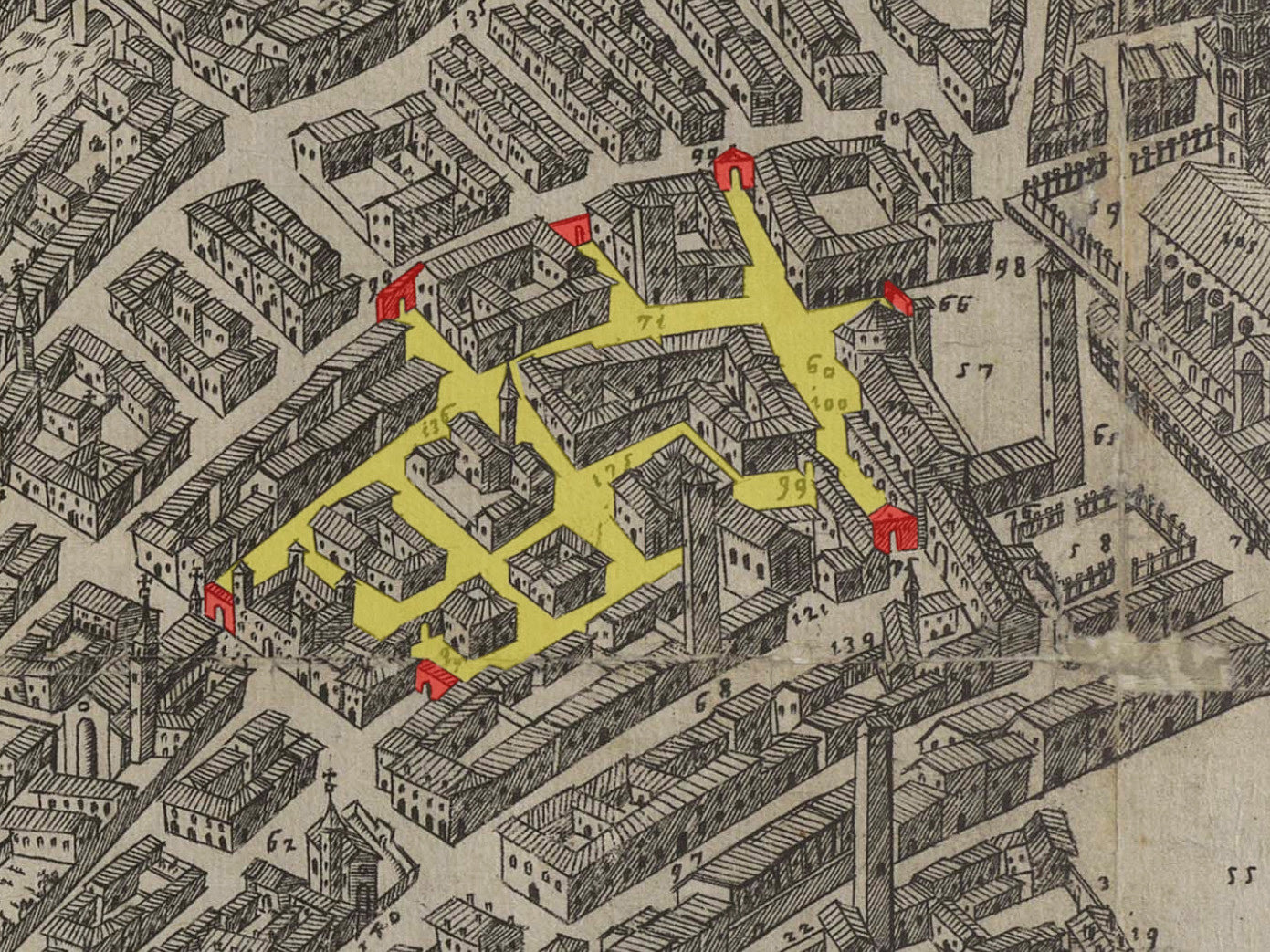MANTUA – The Jews and the Gonzaga family on display

The coexistence of the Jews of Mantua and the Gonzagas, the family that ruled the Lombard city from 1328 to 1708 was “long” and “at times troubled.” The exhibition The Gonzaga family and the Jews of Mantua recounts this story. Housed in the Mirror Room of the Ducal Palace, the residence of the Gonzaga family, and curated by former president of the Jewish Community Emanuele Colorni and scholar Mauro Patuzzi, it is open until August 4. Colorni and Patuzzi authored two informative books on local Jewry titled C’era una volta il ghetto. Storia, immagini e guida di Mantova ebraica (Once upon a time there was the ghetto. History, images and guideto Jewish Mantua) and C’era una volta il coro degli ebrei. Un secolo di canto e musica a Mantova (Once upon a time there was the Jews’ choir. A century of chant and music in Mantua).
Both books align closely with the exhibition, which draws from research conducted at the Gonzaga Archive and the Archive of the Jewish Community, the initiative’s promoter. In a chronological series of fifteen educational panels, the curators explore the different stages of this relationship, emphasizing, as Colorni noted, “the richness of these two archives, which I would love to see be better known and visited.”
The exhibition reveals that the first Jews settled in the Mantuan territory in the late 14th century, initially seeking residence permits to work as moneylenders. Over time, they took on roles such as merchants, artisans and teachers, forming a community that flourished economically, religiously, and culturally. Notably, Mantua was where the first edition of the Zohar, a cornerstone of Jewish mysticism, was printed.
Walking through Mantua today reminds visitors that “there once was the ghetto,” echoing one of Colorni and Patuzzi’s book titles. The Gonzaga family enforced the ghetto from 1610 to 1612, and despite subsequent Austrian rule, Mantuan Jews were forced to live within its confines for over two centuries until the Risorgimento liberated them from these restrictions.
Overall, Colorni stated, “the Jewish experience under the Gonzaga rule was largely positive and mutually beneficial for both the Jewish minority and the Christian majority. A significant lesson in coexistence even relevant today.”
Translated by Chiara Tona and revised by Francesca Pischedda, students at the Advanced School for Interpreters and Translators of the University of Trieste, trainees in the newsroom of the Union of the Italian Jewish Communities – Pagine Ebraiche.
